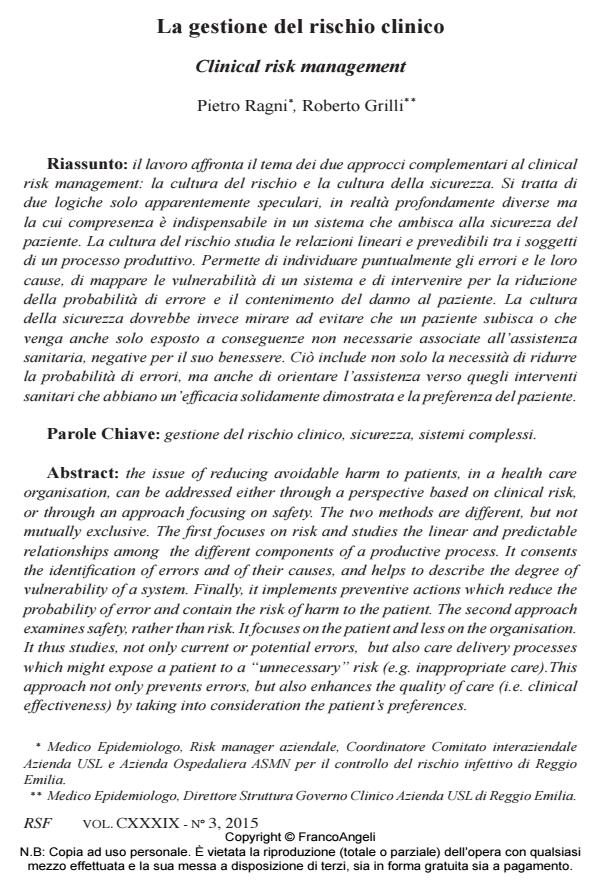Clinical risk management
Journal title RIVISTA SPERIMENTALE DI FRENIATRIA
Author/s Pietro Ragni, Roberto Grilli
Publishing Year 2015 Issue 2015/3
Language Italian Pages 14 P. 117-130 File size 2187 KB
DOI 10.3280/RSF2015-003008
DOI is like a bar code for intellectual property: to have more infomation
click here
Below, you can see the article first page
If you want to buy this article in PDF format, you can do it, following the instructions to buy download credits

FrancoAngeli is member of Publishers International Linking Association, Inc (PILA), a not-for-profit association which run the CrossRef service enabling links to and from online scholarly content.
The issue of reducing avoidable harm to patients, in a health care organisation, can be addressed either through a perspective based on clinical risk, or through an approach focusing on safety. The two methods are different, but not mutually exclusive. The first focuses on risk and studies the linear and predictable relationships among the different components of a productive process. It consents the identification of errors and of their causes, and helps to describe the degree of vulnerability of a system. Finally, it implements preventive actions which reduce the probability of error and contain the risk of harm to the patient. The second approach examines safety, rather than risk. It focuses on the patient and less on the organisation. It thus studies, not only current or potential errors, but also care delivery processes which might expose a patient to a "unnecessary" risk (e.g. inappropriate care).This approach not only prevents errors, but also enhances the quality of care (i.e. clinical effectiveness) by taking into consideration the patient’s preferences.
Keywords: Clinical risk management, safety, complex systems.
Pietro Ragni, Roberto Grilli, La gestione del rischio clinico in "RIVISTA SPERIMENTALE DI FRENIATRIA" 3/2015, pp 117-130, DOI: 10.3280/RSF2015-003008